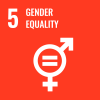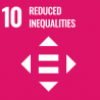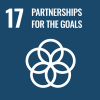International labour migration is a defining feature of the global economy, with growing numbers of jobseekers looking beyond local and national boundaries for employment opportunities.
It is estimated that around 272 million people worldwide are international migrants. While most people move within their country of birth, about a quarter of all migrants move between countries in search of better employment, education and livelihood opportunities as well as more stable and peaceful environments. Nearly two thirds of international migrants – or 164 million people – move for work. Almost half of international migrants today are women, with some countries and economic sectors seeing women as the majority of the migrant workforce.
Migrant workers make countless meaningful contributions to society. They add to the development of their own countries through remittances and help facilitate the transfer of skills and creation of business and trade networks. In countries of destination, migrant workers fill critical labour shortages, especially within the context of ageing populations and changing labour demographics.
Despite the abundance of positive impacts, the full potential of labour migration is often not realized. Many migrant workers face serious human rights risks throughout the migration process and at work, including discrimination, unequal wages, and restrictions on their fundamental rights and freedoms. Migrant workers – especially those in lower skills categories and/or employed in the informal economy – remain vulnerable to unacceptable working conditions and exploitation that, in the worst cases, can amount to human trafficking and forced labour.
























